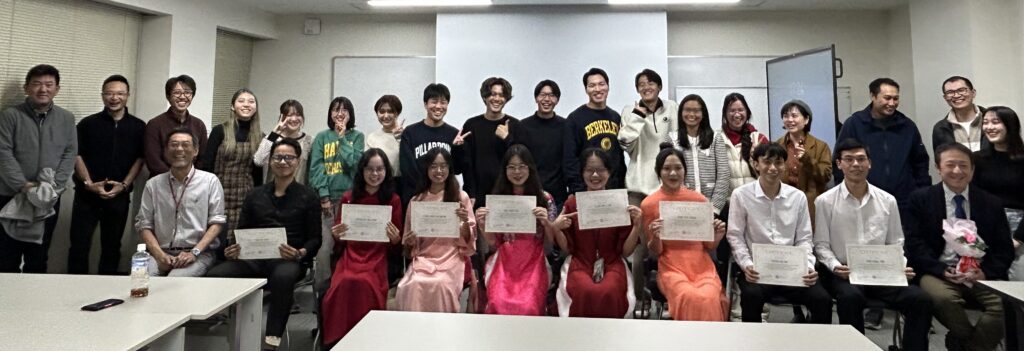The program was held from November 17 to 23, 2024, with the aim of raising interest in Japan’s cutting-edge science and technology and encouraging talented overseas personnel to study in Japan through practical training on environmental issues in Japan and exchanges with Vietnamese students. A total of eight participants, four from Hue University of Agriculture and Forestry, two from Hue University of Science, and two from Da Nang University of Technology, participated in the program.
In the three online lectures that preceded the field training, following an overview of the training in Japan, our faculty members explained the principles of geographic information systems, Japanese agriculture and the environment, Japanese rural areas, Satoyama and the environment, Japanese cities and the environment, and new architectural attempts and the environment in rural areas in Japan. During the field trip, the participants visited environmental facilities such as the Kyoto City municipal waste treatment plant (Sastena Kyoto) and the Konan Chubu wastewater treatment plant in Shiga Prefecture. They also saw how garbage is sorted in the town and realized that there is much to be done about garbage disposal in their home country.
During a visit to the villages in the suburbs of Kyoto City, a joint effort by the local community, government, and university was introduced for restoring the Chimakizasa that had declined due to animal browsing, and they also worked on their own to harvest thatch, which is necessary to maintain thatched houses. At La Collina Omihachiman, a confectionery shop that also focuses on preserving the landscape of Satoyama, they learned about architecture that makes use of Satoyama wisdom. They were grateful to have been exposed to local people who are willing to work hard to maintain Satoyama activities, even as the declining birthrate and aging population make it increasingly difficult to do so.
In both training programs, our undergraduate students who had stayed in Vietnam for student exchange program also participated and were provided with opportunity to learn together. We also provided opportunities to interact with Vietnamese graduate students who are currently studying at our Graduate School to help them form a concrete image of what it is like to study abroad.
On the last day of the training, the participants were divided into four groups and presented their findings. After each presentation, there was a lively question-and-answer session with the students and faculty who participated in the training. After the on-site training, the outcomes were presented online at an international symposium hosted by GSGES, “Kyoto University International Symposium 2024 on Education and Research in Global Environmental Studies in Asia”, on December 3. These activities seemed to have further increased their motivation to study in Japan.

